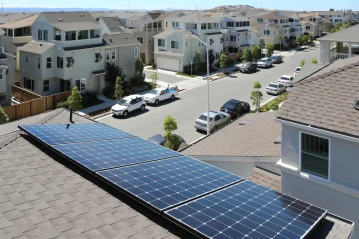
Solar energy is becoming an increasingly popular and environmentally-friendly way to power our homes and businesses. At the heart of every solar power system is a crucial component called the solar charge controller. The solar charge controller regulates the flow of electricity from the solar panels to the batteries, ensuring optimal charging and preventing overcharging or damage. In this blog post, we will provide a step-by-step guide on how to test a solar charge controller to ensure its proper functioning and maximize the efficiency of your solar power system.
How to Check if a Solar Controller is Working
Before diving into the testing process, it's important to perform some initial checks to ensure that the solar charge controller is in good working condition. Start with a visual inspection of the controller, checking for any physical damage or loose connections. Next, use a multimeter to measure the output voltage of the controller. This will give you an idea of whether it is producing the expected voltage within its specifications. Additionally, verify the connectivity of the load to ensure that it is properly connected to the charge controller.
Specific Settings for Testing
Each solar charge controller may have specific settings that need to be considered during the testing process. It is essential to familiarize yourself with the manufacturer's instructions and specifications for the particular charge controller model you are testing. Understanding the settings and adjusting them accordingly will help you obtain accurate test results.
Step-by-Step Guide for Testing a Solar Charge Controller
1. Gather the necessary tools and equipment, including a multimeter, safety gloves, and safety glasses.
2. Disconnect the solar panel from the charge controller and the battery to ensure safety during testing.
3. Perform a thorough visual inspection of the charge controller, looking for any signs of damage or loose connections.
4. Clean the charge controller and its terminals to remove any dust or debris that may affect its performance.
5. Using the multimeter, measure the output voltage of the charge controller. Compare the reading to the expected voltage range specified by the manufacturer.
6. Verify the connectivity of the load by connecting a known working load to the charge controller's load terminals and ensuring proper functionality.
7. Analyze the test results and interpret any deviations from the expected values. Consult the manufacturer's instructions or seek professional assistance if needed.
How to Reset Your Solar Controller
In some cases, you may need to reset your solar charge controller to resolve certain issues or restore it to its default settings. Common reasons for resetting include troubleshooting malfunctions or making changes to the configuration. To reset your solar charge controller, follow these steps:
- Disconnect the solar panels and the battery from the charge controller.
- Locate the reset button on the controller, usually found on the front panel or underneath a protective cover.
- Press and hold the reset button for a few seconds until you see the controller's indicators or display resetting.
- Once the reset process is complete, reconnect the solar panels and the battery, and verify that the controller is functioning properly.
Final Thoughts on Testing a Solar Charge Controller
Regularly testing your solar charge controller is essential for maintaining the efficiency and longevity of your solar power system. By following the step-by-step guide provided in this blog post, you can ensure that your solar charge controller is working optimally. In case you encounter any issues during testing or have concerns about the performance of your charge controller, consult the manufacturer's instructions or seek assistance from a qualified professional.
Remember, proper maintenance and care, including regular testing, are key to maximizing the benefits of your solar power system. By taking the time to test your solar charge controller, you can rest assured that your system will continue to provide clean and sustainable energy for years to come.

0 comments